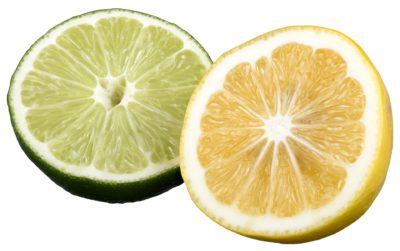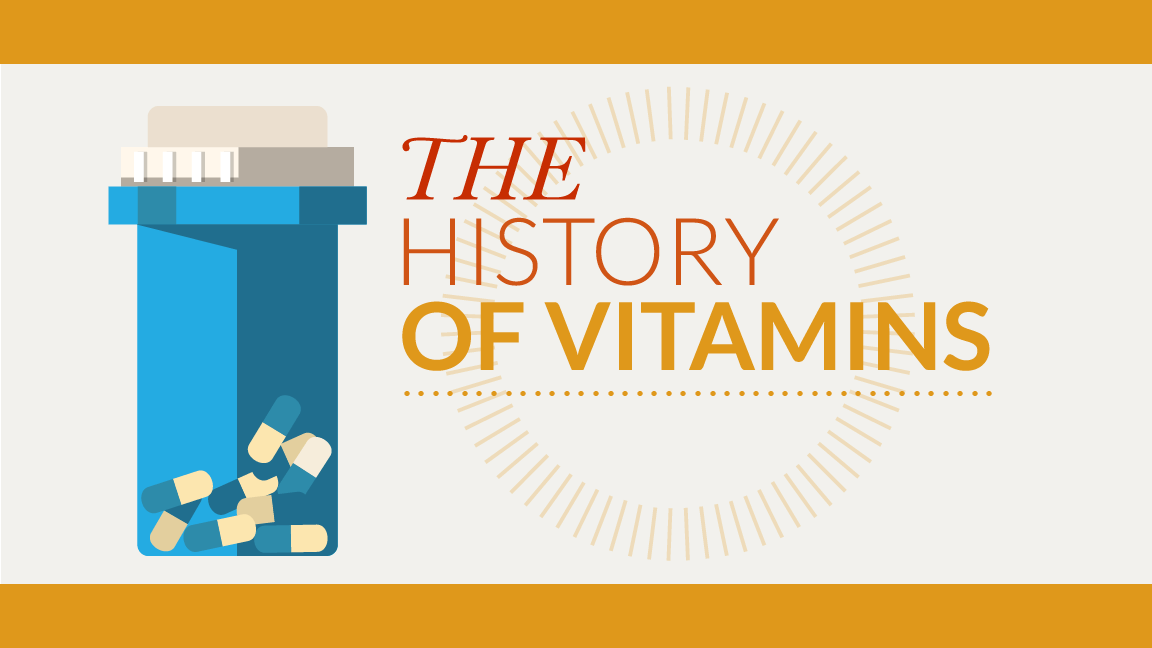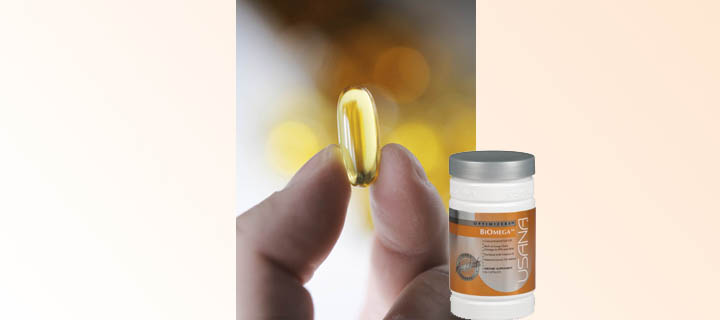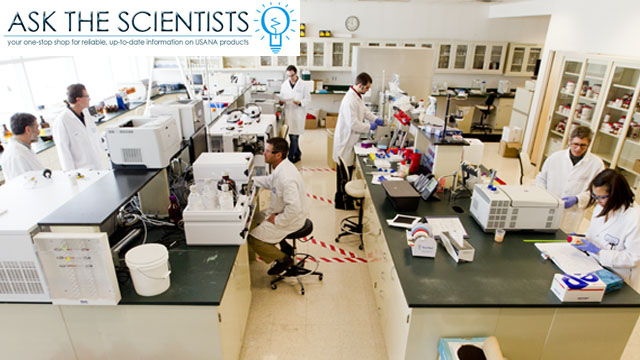The History and Discovery of Vitamins Through The Ages
A History of Vitamin Discovery Throughout the Ages
There’s no question that the nutrients we take in play a major role in our health. In fact, we’ve got centuries of trial and error to prove it.
If it wasn’t for hundreds of years of observations, we wouldn’t even be able to identify vitamins and minerals and how they help maintain our health.
It’s because of these discoveries that we have the supplements we have today. Thanks to diligent records, we can help families all over the world maintain a balanced and healthy lifestyle.
Thankfully, nutrient deficiency diseases are not a very prevalent issue today.
Now, let’s take a closer look to uncover the link between nutrition and health, a history of observations, and the discovery of vitamins.
The 1600’s: Rickets (Vitamin D)
 Rickets is a disease caused by a deficiency in Vitamin D.
Rickets is a disease caused by a deficiency in Vitamin D.
Due to the outbreak of rickets verified in the 17th century in England, the situation was known as the ‘English disease’, being its first detailed description presented by Francis Glisson.2
“It is clear that it is reasonable now to suggest that vitamin D deficiency was a major cause of the rickets described in the middle of the seventeenth century. It is not possible to say whether anything had changed that led to what seemed to be new disease in either part of the century.
England at that time was a place of great inequalities, great riches setting alongside desperate poverty.
Within the walled City of London it was very crowded, and there were many very narrow streets (limiting access to sunlight).
With the civil wars there may have been serious food shortages, but that cannot be proved, and rickets seemed to affect both the poor and the upper class.” – O’Rhiordan, Bijvoet, Rickets before the discovery of Vitamin D.
It’s now known that Vitamin D promotes a healthy, balanced immune system through its key role in regulation and differentiation of immune system cells. It also has been linked to healthy endothelial function, which is important for cardiovascular health. And, it also helps maintain normal functioning of the nervous system.
The United States saw the eradication of nutritional rickets in the 1930s after it was discovered that Vitamin D has antirachitic properties.
The 1740’s: Scurvy (Vitamin C)
 Scurvy is a disease caused by a deficiency in Vitamin C. Early symptoms can include weakness, feeling tired, and sore arms and legs. Without treatment, gum disease decreased red blood cells, and bleeding from the skin can occur.
Scurvy is a disease caused by a deficiency in Vitamin C. Early symptoms can include weakness, feeling tired, and sore arms and legs. Without treatment, gum disease decreased red blood cells, and bleeding from the skin can occur.
“Although they didn’t know it at the time, it was the earliest seafaring explorers who were responsible for discovering vitamins.
On their long voyages, sailors would almost exclusively eat dehydrated foods and fish with little or no fresh fruit or vegetables.
Sailors would start to show symptoms of scurvy such as weakness, tooth loss, and bruising after 10 to 12 weeks on their voyage. Once those sailors got to land and started consuming “acid fruits”, their symptoms would disappear in one to two weeks.
The British navy observed this and adopted the use of citrus juice from lemon or limes into the sailors’ daily rations, curing the disease for their sailors.” – Dr. Brian Dixon
It was James Lind, a Scottish doctor, who is given the credit for discovering that scurvy can be prevented by consuming citrus fruits, even though it wasn’t known at the time that Vitamin C deficiency was the root cause.
Scurvy, while uncommon, still occurs in developed countries despite the widespread availability of vitamins and fortified foods.
The 1890s: Beriberi (B1 Thiamin)
Beriberi is a disease that is caused by B1 (Thiamin) deficiency. According to Healthline, there are two types of this disease: wet and dry beriberi. Wet beriberi affects the heart and circulatory system, and dry beriberi damages the nerves and may lead to loss of muscle strength or paralysis.
Beriberi was discovered in 1897 by Christiaan Eijkman, a Dutch physician, and pathologist. He demonstrated that beriberi is caused by poor diet, and discovered that feeding unpolished rice to chickens helped to prevent beriberi. 5
The chances of developing Beriberi are very low if you have access to foods rich in Thiamin (vitamin B1). These include foods like beans, vegetables, meats, and whole grains.
The 1900’s: Pellagra (Niacin)
 Although Pellagra was observed in the 1750s, it didn’t arise in the United States until the beginning of 1907. Outbreaks were reported in various asylums in the United States in 1907, and by 1910 the disease was recognized throughout most of the South and in several other states.
Although Pellagra was observed in the 1750s, it didn’t arise in the United States until the beginning of 1907. Outbreaks were reported in various asylums in the United States in 1907, and by 1910 the disease was recognized throughout most of the South and in several other states.
It was studied heavily from 1914 to 1929 by officer Joseph Goldberger. Goldberger observed that Pellagra mostly affected rural areas of the U.S. and that it was associated with poverty. His plan to help the endemic was dietary changes with a reduction in cereals, vegetables, and canned foods and an increase in fresh meat, eggs, and milk.
Pellagra was observed to occur in individuals who ate diets that were unbalanced and low in protein. He called the nutritional factor that helped cure Pellagra the “P-P factor”, and it was identified later in the 1930s that this was actually nicotinic acid, subsequently named Niacin.
In 1937, clinical trials confirmed that niacin rapidly cured pellagra in people. 7
Pellagra is only common in parts of the world today where people have a lot of corn in their diet. In most regions, this is not a disease of concern for the general population.
1913: Vitamin A discovered
The first vitamin to be discovered was Vitamin A in 1913.
An English biochemist named Frederick Gowland Hopkins found unknown factors present in milk that were not fats, proteins, or carbohydrates, but were required to aid growth in rats.
He called this nutrient “factor A”, and later this fat-soluble nutrient became known as Vitamin A.
Hopkins was later awarded the Nobel Prize in 1929 for his discovery. 8
1922: Vitamin E
According to the National Institutes of Health, Vitamin E is found naturally in some foods, added to others, and is available as a dietary supplement.
Vitamin E functions as both an antioxidant and it plays a role in supporting anti-inflammatory processes in response to physical activity, and immune health.
Vitamin E was identified as a dietary factor that was essential for healthy reproduction as well.
It was discovered in 1922 and later isolated in 1936. 9
1926: Vitamin B1 (Thiamin)
Thiamin is a water-soluble vitamin that is part of the vitamin B complex group.
The B vitamins are important because they help our bodies convert food into energy.
Thiamin helps support a healthy nervous system and muscles function, assists with the flow of electrolytes, supports digestion, and carbohydrate metabolism.10
Thiamin was isolated in 1926 by Barend Jansen and Willem Donath.11
1928: Vitamin C
Vitamin C is used in our bodies to aid the healthy growth and natural process of cell renewal. It helps the body’s normal collagen production, which is a protein that supports the healthy development of our skin, tendons, cartilage, ligaments, and blood vessels. 12
Vitamin C is also an antioxidant, which blocks some of the damage caused by free radicals. Free radicals are substances that cause damage to our DNA.
Vitamin C was isolated in 1928 by scientist Albert Szent-Gyorgyi. It was isolated from a substance in the adrenal glands that he called hexuronic acid. Vitamin C’s chemical structure was deduced completely in 1933 by Norman Haworth.13
1932: Vitamin D
Although the disease Rickets was known for centuries, the cause of it remained elusive until the twentieth century.
In 1919, Sir Edward Mellanby in Great Britain observed dogs who were fed a diet of mostly oatmeal and kept indoors away from the sun could be cured of the disease by providing cod liver oil.
Two other physicians, Huldshinsky and Chick found that children who were suffering from rickets could be cured by exposing them to summer sunlight or artificially produced UV light.
Since the idea of Vitamin D had become clear, its vitamin structure was identified in 1932 when Askew et al. were able to isolate vitamin D2 from a mixture of ergosterol (a compound found in fungi). 14
1934: Vitamin B2 (Riboflavin)
Vitamin B2, or Riboflavin, is a water-soluble vitamin part of the vitamin B complex group.
It is required to support a number of metabolic activities. Although it’s only needed in small amounts, it’s essential to all animals, and deficiency is known as ariboflavinosis.
Symptoms of being deficient include cracking skin at the corners of the mouth, swollen red tongue, and sensitivity of eyes to light.
There isn’t a disease related to vitamin B2 deficiency, and deficiency in vitamin B2 has never been fatal. 15
1936: Vitamin B7 (Biotin)
Biotin is a water-soluble vitamin that is a part of the vitamin B complex group.
Nutritional deficiencies of biotin are very rare, so the role of biotin in our metabolism wasn’t discovered until the 1930s.
Biotin deficiency may be found in severely malnourished children in developing countries, and in individuals who consume large quantities of raw eggs. However, Biotin deficiency is not a concern for the general population.
Biotin was identified in 1936 by German-Dutch Biochemist Fritz Kogl and his graduate student Benno Tonnis at Ultrecht University. 16
1937: Vitamin B3 (Niacin)
Vitamin B3 is a water-soluble vitamin that is part of the vitamin B complex group. It plays an important role in supporting all metabolic processes in the body and is required for healthy growth.
Vitamin B3 can be acquired from the diet, as well as produced in small amounts from the amino acid, tryptophan.
In 1937, biochemist Conrad Elvehjem identified nicotinic acid in fresh meat and yeast. This compound, now known as niacin, is vitamin B3.
This discovery led to a cure for pellagra. 17
1938: Vitamin B5
Vitamin B5 is another water-soluble vitamin that is part of the vitamin B complex group.
It plays an important role in the healthy metabolizing carbohydrates, fats, and proteins. It also helps support the body’s natural cell renewal processes.
Roger J. Williams and R.W. Truesdail discovered vitamin B5 in 1931, and it was isolated in 1938.
B5 is found throughout all living cells, hence it’s scientific name deriving from the Greek word “pantos”, meaning “everywhere”. 18
1938: Vitamin B6 (Pyridoxine)
Vitamin B6, also known as Pyridoxine, is part of the vitamin B complex group. Vitamin B6 plays a vital role in the function of over 100 enzymes that catalyze essential chemical reactions in the human body. It is essential for biological processes such as hemoglobin and amino acid biosynthesis, fatty acid metabolism, and maintaining healthy blood glucose levels (provided they were healthy to begin with).
It was isolated in 1938 by Samuel Lepkovsky.
1939: Vitamin K
Vitamin K was discovered completely by chance.
In 1929, scientist Henrik Dam discovered Vitamin K and it’s association with blood coagulation.
Ten years later, in 1939, Vitamin K was finally isolated by E.A. Doisy from hexane extracts. 19
1941: Vitamin B9 (Folate)
Folate, another vitamin that is a part of the B complex group, is important for ensuring normal growth and development and maintenance of optimal health.
Folate is particularly critical during the early stages of human development. Pregnancy is recognized as a time when folate requirements are increased to sustain the demand on the body to grow healthy fetal, placental, and maternal tissue.
Folate was extracted and isolated from 4 tons of spinach in 1941 by Mitchell et al. The name was derived from the Latin word Folium for leaf. 20
1948: Vitamin B12
Vitamin B12 was isolated in 1948 by two teams working independently in the US and UK, from a substance in the liver and named cobalamin.
We now know that the liver contains a high concentration of vitamin B12. 21
Vitamin B12, like the rest of the B vitamins, help convert food into energy. They are also needed to support healthy skin, hair, eyes, and liver development. It is especially important for maintaining healthy nerve cells and helps support the production DNA and RNA.
People who are at risk for Vitamin B12 deficiency include vegetarians, vegans, and the elderly. 22
Vitamin-like nutrients
There are some vitamin-like nutrients that are essential to our diet. They are necessary for survival, and we do produce a small amount of them on our own. However, the amount we produce may not be the most optimal levels for health. Coenzyme Q10 and Choline both occur naturally in animal products like eggs and meat, and can also be found in supplement form.
Coenzyme Q10
“The discovery of coenzyme Q10 was not a simple accident but rather the result of a long train of tests by numerous researchers into the mechanisms and compounds involved in energy conversion.” – Cardiac Surgical Research team at Alfred Hospital.
Coenzyme Q10 was discovered in 1957 by Dr. Frederick Crane and his team.
Choline
Choline is essential for building and maintaining healthy cells. It’s important for muscle and nerve function.
Choline was discovered in 1862 by a chemist named Adolph Strecker.
1992 and beyond
The discovery of vitamins throughout the twentieth century played a pivotal role in how we think about nutrition and its connection to our overall health today.
Centuries of trial and error, research, and observation have made it possible to identify and isolate nutrients needed to maintain a balanced and healthy lifestyle.
Since USANA was founded in 1992, we’ve made it our mission to support that lifestyle by providing the highest quality nutritional supplements in the world.
Our supplements are intended to provide optimal nutrition.
That’s why we have a team of in-house experts and scientists dedicated to incorporating knowledge from the latest scientific findings and clinical studies into our products.
The fact is, science is at the heart of every product we offer.
And we’re making history.

References
- https://www.ncbi.nlm.nih.gov/pmc/articles/PMC4348990/
- https://www.ncbi.nlm.nih.gov/pubmed/17940496
- http://www.nature.com/bonekeyreports/2014/140108/bonekey2013212/full/bonekey2013212.html
- http://www.healthline.com/health/beriberi#overview1
- https://www.nobelprize.org/educational/medicine/vitamin_b1/eijkman.html
- http://www.webmd.com/a-to-z-guides/understanding-anemia-symptoms#1
- https://www.ncbi.nlm.nih.gov/pubmed/23183297
- http://www.news-medical.net/health/Vitamin-A-History.aspx
- http://www.vitaminsinmotion.com/fileadmin/data/pdf/VitaminsinMotion_VitaminE.pdf
- http://www.mayoclinic.org/drugs-supplements/thiamine/background/hrb-20060129
- https://www.ncbi.nlm.nih.gov/pubmed/23183292
- http://umm.edu/health/medical/altmed/supplement/vitamin-c-ascorbic-acid
- https://www.ncbi.nlm.nih.gov/labs/articles/23183299/
- http://www.nature.com/bonekeyreports/2014/140108/bonekey2013213/full/bonekey2013213.html
- https://www.ncbi.nlm.nih.gov/pubmed/23183293
- https://www.ncbi.nlm.nih.gov/pubmed/23183297
- http://www.vitaminsinmotion.com/fileadmin/data/pdf/VitaminsinMotion_VitaminB3.pdf
- http://www.vitaminsinmotion.com/fileadmin/data/pdf/VitaminsinMotion_VitaminB5.pdf
- http://www.cyberlipid.org/vitk/vitk0001.htm
- https://www.ncbi.nlm.nih.gov/pubmed/26451605
- https://www.betrinac.com/blogs/b-vitamins-homocysteine-memory-loss-and-dementia/6803062-history-of-the-discovery-of-vitamin-b12
- http://umm.edu/health/medical/altmed/supplement/vitamin-b12-cobalamin
- http://www.coenzymeq10.com.au/







Hello there, I’m going to use this article to make an infomercial for USANA . I’m going to send the link of the finish project.